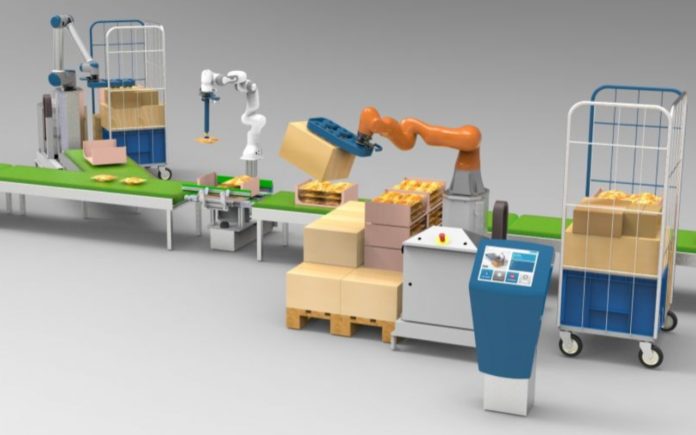The Eindhoven University of Technology (TU/e) has started researching how to make packing robots run faster and smoother.
Together with two other universities, a knowledge institute, and four companies, four years of research will be done. The European Union has made a subsidy of €4.4 million available for this I.AM project.
Packing robots are widely used in distribution centres. They are even indispensable. Simply because the robots cannot predict the effects of a collision, they do not make fluid movements. People can do that and are, therefore, faster, but often find this kind of work unattractive.
Anticipating impacts
Robots often move in a bit of a woody way. The arms often stop just before picking something up or putting it down. This is done to minimize the risk of damage. Today’s robots are precise and reliable, but far from dynamic. They do not dare to and cannot make smooth movements.
People are much better at predicting the impact on a package when it is being moved. They can put an item on a conveyor belt in one quick, smooth movement. They can even throw it without damaging the item, the conveyor belt, or themselves. The same goes for unpacking and packing boxes and pallets.
Major study
Researchers from the TU/e, together with colleagues from the Technical University of Munich, the Swiss Federal Institute of Technology, and CRNS, the French research institute, will investigate how to make logistics robots impact-aware.
The intention is for new robots to reliably predict the effect of a hard or soft collision with the environment or other objects. With this knowledge, they can then pick up and place items more quickly.
Source: Studio040
Translator: Bob
Editor: Melinda Walraven
















